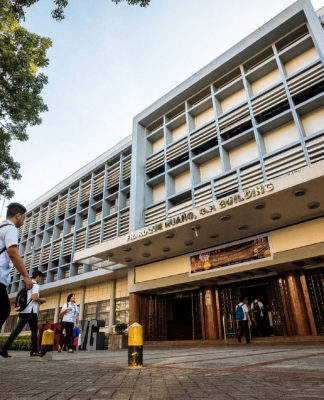 IN 1981, a “silent killer” claimed the lives of a particular group of people—drug users and homosexual men. All of them showed symptoms of pneumonia and cancerous skin tumors and weakened immune system.
IN 1981, a “silent killer” claimed the lives of a particular group of people—drug users and homosexual men. All of them showed symptoms of pneumonia and cancerous skin tumors and weakened immune system.
This silent killer was known to be caused by the deadly human immunodeficiency virus (HIV). And 30 years after, the virus has become more infectious and evasive against possible treatments—despite medical breakthroughs and the availability of highly advanced technology.
Based on the recent registry of the Department of Health, cases of HIV/AIDS in the Philippines escalated to 491 cases last October, 66 percent higher compared to the 295 reported cases in the same month last year.
According to the Philippine National AIDS Council (PNAC), the statistics continue to escalate because of unprotected sex—mainly between homosexuals—and needle sharing among drug users.
What’s scary about PNAC’s report is the increasing prevalence of the disease among the 15 to 24-year-old age bracket and the growing number of infected males who seem to contribute to the fast spread of the disease.
Such figures contradict the 2013 Global Report published by the Joint United Nations Programme on HIV and AIDS, stating that new HIV infections in Southeast Asia decreased by one-third.
The country’s health sector has been directing much of its budget allocations in the prevention of the spread of HIV/AIDS, that is, by giving free condoms, diagnostic check-ups and antiretroviral therapies to the public.
But what about funds for research projects which aim to contribute in the global effort to find a cure for AIDS?
Attending a symposium organized by UST in collaboration with Nagoya City University last November 25 made me realize that despite the country’s efforts to meet one of United Nations’ millennium development goals in reversing AIDS epidemic, the Philippines is lagging behind other countries when it comes to establishing valuable information regarding effective strategies to eradicate HIV.
Unlike other countries, the Philippines does not have a facility dedicated for HIV/AIDS-related scientific projects. In addition, we lack advanced equipment like supercomputers needed to keep up with the global trend.
It may seem to be too idealistic to prioritize the funding of scientific researches more than the procurement of contraceptives and antiretroviral drugs. But looking at the long-term implications of these initiatives, results from these studies will provide useful information that the scientific community and our government may use in mitigating the disease.
The government should not merely depend on condoms and antiretroviral therapies to lessen the number of infections among Filipinos because these will not prevent people from falling into their mundane desires.
“Safe sex” does not reduce the cases of men having sex with men or the spread of infections through sex workers. The term only misleads the people—making them think that nothing is wrong in getting involved in sexual actions provided that people stay protected.
No matter how conservative the Catholic Church may be, this institution remains faithful to the principles of science—believing that as rational beings, humans can formulate logical decisions other than responding to the body’s need to satisfy itself.
















